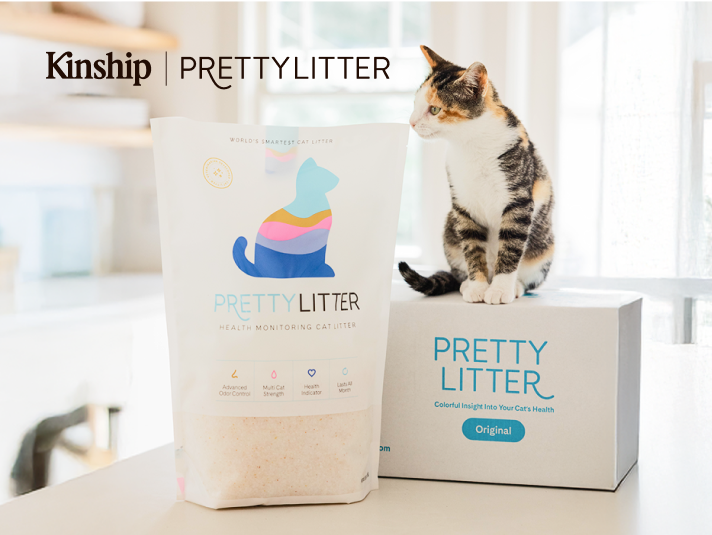15 Things You Think Are Toxic for Dogs — But Actually Aren’t
From (human) prescription meds to poinsettia plants, these "toxic" items may not be so bad for your pup.
During emergency hours, I receive many calls that begin, “My dog ate…” followed by the questions, “Is this harmful?” and “Do I need to bring them in?” Many of these inquiries are about substances that are not necessarily toxic, and I often tell people their dog can remain happily at home. Below are the most common "nontoxic" toxins that I'm asked about on a regular basis. Familiarize yourself with this list to save you and your dog a trip to the vet.
15 "Toxins" That Actually Aren't Toxic for Dogs
1. Silica gel packets
Packed in products like vitamins and new clothes to protect against spoilage, silica gel packets are commonly ingested or chewed by dogs. If your dog eats them, mild gastrointestinal (GI) symptoms, such as an upset stomach, are possible. Though silica gel is chemically and biologically inert, the main risk is that packets can potentially cause an obstruction in the intestines if the whole packet is swallowed, especially in small dogs. (The packaging is often the biggest risk in the case of all these toxins. See note below.)
Save on the litter with color-changing tech that helps you better care for your cat.
2. Oxygen absorbers
These little packets, which are usually found in dry, packaged foods, contain iron powder, sodium chloride, and carbon. If your dog ingests them, they should be okay. By the time they're eaten, the iron powder has been converted to ferric oxide (aka, rust).
3. Ant and roach traps
Ant and roach traps contain multiple active ingredients but at very low concentrations so if they are ingested by dogs, they are not likely to cause any significant clinical effects. That said, they may cause mild GI upset.
4. Birth Control
Birth control pill packets contain 21 tablets of estrogen and/or progesterone and possibly seven placebo pills. The hormone pills contain low levels of estrogen (less than 0.04 mg/tablet) and some contain iron. The levels of toxicity for estrogen are dosages greater than 1 mg/kg of body weight, and for iron, dosages of greater than 20 mg/kg. The good news is these levels are usually not reached if a dog ingests birth control pills. A 25-pound dog would need to eat about 300 pills! Other methods of birth control, such as the NuvaRing, contain 11.7 mg of progesterone and 2.7 mg of estrogen; ingestion of this by a dog rarely reaches the 1 mg/kg toxic levels.
5. Chemically Treated Toilet Water
Toilet water with tank “drop-ins” can be corrosive in their concentrated forms (the actual gel or tablet) but are only mild GI irritants once diluted in toilet water. Drinking small amounts of toilet water should not be of concern for your dog. But if your pup has lapped up the entire bowl's contents, you can dilute the toilet water that was ingested by encouraging your dog to drink his or her “normal” water or other fluids such as chicken broth.
6. Fertilizers with Salts of Nitrogen, Phosphorous, Potassium (N-P-K):
If ingested by dogs, fertilizers are usually only GI irritants. But there's a caveat: Check for added iron, insecticides, or pesticides, which can increase toxic potential. If the iron level is greater than 5 percent, more significant effects may occur.
“Organic” Fertilizer/Bone Meal/Blood Meal products are very attractive to dogs, and the primary concern here is if there are any insecticides mixed in. Another concern is if the product is moldy or rancid, as your dog can develop a bacterial gastroenteritis (a bacterial cause of vomiting and diarrhea) or develop severe tremors from tremorgenic mycotoxins that are found in moldy substances. There is also a risk of impaction in the intestines if a large amount is ingested.
7. Lawn Herbicides
Lawn treatment herbicides, in general, do not cause severe systemic symptoms when ingested by a dog or cat. Mild GI upset may occur when the application is fresh and is less likely to occur once the product has dried.
8. Fire Logs
Fire logs generally contain sawdust, wood chips, peanut shells, petroleum wax, ammonium chloride, and potentially a metal, such as copper, to produce flame color. If your dog ingests a fire log, systemic toxicity is not expected but there could be GI upset and obstruction risk.
9. Poinsettia Plants
Poinsettia ingestion by dogs causes only mild GI upset. The myth of the “deadly nature of the poinsettia plant” evolved from a 1900s rumor of an army officer’s child dying after eating one leaf. Later, human studies revealed that a toxic dose for a 50-pound child is more than 600 leaves.
10. Glow Sticks and Jewelry
Glow jewelry contains dibutyl phthalate, which has a very unpleasant taste. If your dog eats a glow stick, they may display side effects such as drooling, hyperactivity, and head shaking. Treatment includes giving your dog a tasty treat to get the bad taste out of their mouth and wiping off any liquid that remains on their fur (to find it, you may need to take your dog into a dark room!).
11. Glue Traps
Glue traps are commonly used to kill rodents and insects (hopefully, they won't be an issue in your home, as they are a cruel method of rodent control). Most contain benign attractants only, such as pheromones, and they are considered nontoxic. However, it is important to make sure other substances have not been added, such as rat bait.
If glue traps are ingested, the main risk is intestinal obstruction. And then there's the issue of decontamination from your dog's skin. Solvents should not be used! Instead, use vegetable oil, mineral oil, or peanut butter to work the glue out of the fur and then bathe your pup with dish soap.
12. Antacids (Tums)
Over-the-counter antacid medications commonly contain calcium carbonate, magnesium hydroxide, and aluminum hydroxide — which, if ingested by dogs, are harmless. The main concern is for the development of vomiting, diarrhea, and constipation. Make sure the antacids do not contain salicylates; if they do, contact your vet or a local emergency clinic right away.
13. Human Thyroid Supplements
Overdoses of human thyroid supplements are well-tolerated by dogs due to poor intestinal absorption and differences in the way the medication is metabolized. Severe signs are not expected at dosages below 1 mg/kg in dogs. Higher doses can result in GI upset, hyperactivity, high blood pressure, lethargy, fast heart rate, and an increased breathing rate. If you notice these signs or symptoms, call your vet.
14. H2 Blockers (Pepcid)
H2 blockers, which include famotidine (Pepcid), ranitidine, cimetidine, and nizatidine, are relatively benign when ingested by dogs. Ingestion of greater than 10 times the therapeutic dose only results in mild GI upset.
15. Triple Antibiotic (Neosporin) and Steroid Creams (Cortizone)
When a dog eats triple antibiotic or steroid creams, it results in only mild clinical signs, if any, as they are poorly absorbed orally. Vomiting and diarrhea may occur, and you may see side effects from the steroids such as increased water consumption, increased urination, increased appetite, and panting. But these symptoms are short-lived and will be self-limiting. There is a risk of obstruction if the tube or cap is ingested.
Beware of Packaging
The greatest risk of many of these “dietary indiscretions” is not from the substance itself, but from the packaging it is contained in, which can cause an intestinal obstruction. Small dogs have a greater risk of developing an obstruction from packaging than larger dogs because of the smaller size of their intestines. For example, a silica gel packet can more easily move through the larger-sized intestine of a Labrador than it can a Chihuahua. Clinical signs of a developing obstruction can include vomiting, diarrhea, painful belly, lethargy, and/or loss of appetite. If any of these signs are noted, seek care from your veterinarian immediately.
Should I Induce Vomiting in My Dog at Home?
We never recommend it for four main reasons:
You may misinterpret the ingredients and induce vomiting of a potentially hazardous substance.
There is a risk of causing aspiration pneumonia if not done properly.
There is a risk of an object getting lodged in the esophagus on the way back up, which causes another set of problems.
We induce vomiting by a simple small injection, which is much more pleasant for your dog than forcing a cup of nasty-tasting hydrogen peroxide down their mouth.
The Bottom Line
The above guidelines are just that — guidelines. Any ingestion of any questionable substance should always be followed up with a phone call to your veterinarian or local emergency clinic. Remember: Anything can be dangerous in the right quantity — even water!




